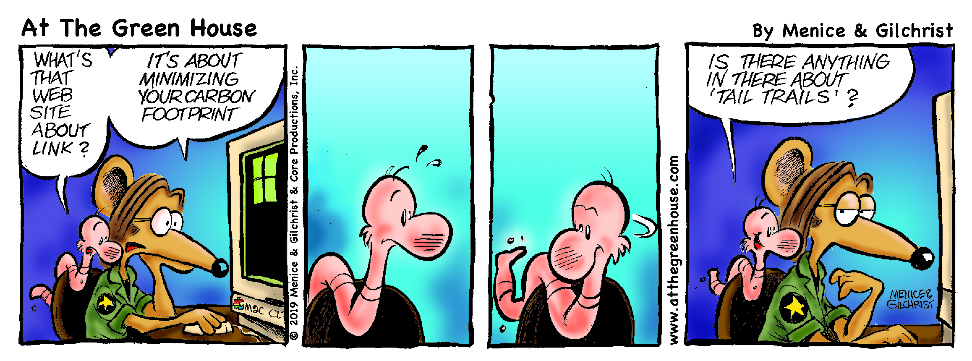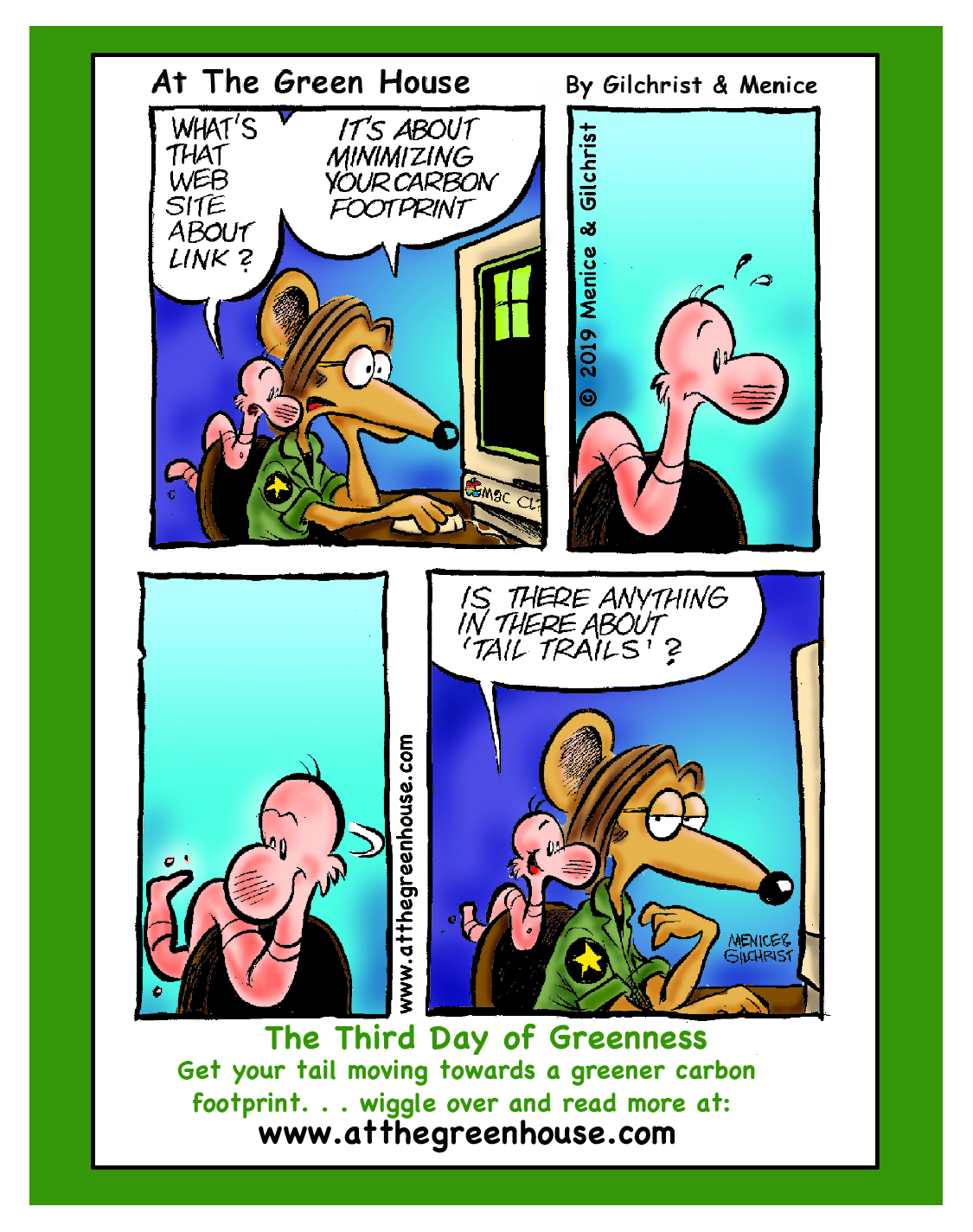Can a Worm Have a Footprint? . . .
As humans, everything we do creates carbon in some form. . . even when we die. But before we get to that stage, we have a lot of living to do, and living requires creating CO2. What creates CO2? Eating, moving, clothing, communication, creating shelter, socialization. . . and well, everything we do.
Everything we consume or utilize uses some form of fuel for it’s creation. If it’s a chicken wing we’re consuming- consider all the steps it took to get to your plate. . . um. . . give me a second here, I’m trying to figure out how I chose talking about a chicken wing. . . I could switch to “celery stalk” but that would be “chickening out.” Literally. NO, let’s give it a try. . . so, a farmer raises a chicken with all it’s food and water and nesting materials and heat and care and energy to make that life possible. Think of all the corn that chicken may have eaten. . . and all the energy that went into creating that corn. . . Then, the chicken is slaughtered to create food for us. . . now a wing is the item of consumption and. . . ( I’m going to let you imagine the next few steps) . . . then it’s put in a bag (packaging was created for this) with other wings. . . fuel is used to keep it cold or frozen. . . fuel is used to deliver it to a market or wholesaler. Let’s say that this wholesaler sells it to “Wing It Bar & Grill” and you come in for a bite after work. . . . and yes, there’s one more wing left on the platter at happy hour and you get to be the lucky consumer. How much energy was used to get this wing to you and make your hour happier? Consider this. . . what if you just ate a piece of corn instead . . . and eliminated all that stuff in between the corn going to the chicken and happy hour? I know. There’s a lot of math to be done and processes to consider. There are many great websites out there where you can set up your own profile and try calculating your carbon footprint. There are hundreds of great videos you can watch to help you understand it all better, and we’re going to link to one below that’s good for children to watch too.
But, I promised a few simple ways we all can reduce our carbon footprints so here goes:
Eat less meat, especially red meat. Grow your own veggies and fruit if possible. If not, eat as locally as possible. Support organic farmers.
Use your own grocery bags and use less plastic. Re-usables are very important!
Keep your heat lower in the winter (wear sweaters etc. ), and reduce A/C usage in the summer (shade your windows etc). Insulate your home, cut down drafts. Reduce home energy consumption. Wash clothes at lower temps- dry outside in the sun if possible. Take shorter showers.
Limit your driving and travel (plan your outing to accomplish as much as you can in one trip). Drive slower. Use less fossil fuels.
Carefully consider your purchases. Try buying products with less packaging, no plastics, made with recyclable materials. Buy less- consume less. Donate old or unused clothing to others. Donate home goods, books etc to others.
And when you get a chance, check out some more cool websites (like Link and Wormy are). Oh, and in case you’re wondering. . . worms are carbon neutral.
Actually, I don’t know for sure that worms are carbon neutral. I have no source for that information. . . I just made it up. But, I’m allowed to do that because I’m a cartoonist. That’s what I do. Peace!
Brad (with Peter looking over his shoulder)
Share this: Twitter | StumbleUpon | Facebook | reddit | LinkedIn

Discussion ¬